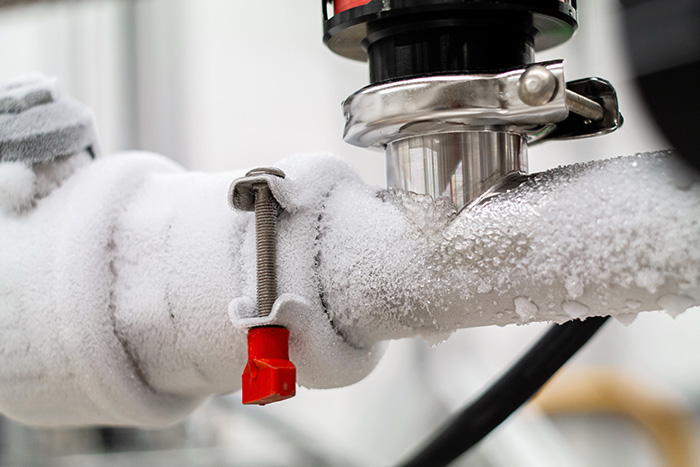Everyone will have their own individual conception when it comes to How to prepare your home plumbing for winter weather.

Winter can wreak havoc on your pipes, specifically by freezing pipelines. Right here's exactly how to avoid it from occurring and what to do if it does.
Introduction
As temperature levels decline, the danger of frozen pipes rises, possibly causing pricey repair services and water damage. Comprehending exactly how to stop frozen pipes is essential for homeowners in cold environments.
Avoidance Tips
Insulating at risk pipes
Wrap pipelines in insulation sleeves or make use of heat tape to secure them from freezing temperature levels. Focus on pipelines in unheated or exterior areas of the home.
Heating strategies
Maintain indoor areas effectively heated up, especially areas with plumbing. Open up cupboard doors to allow warm air to flow around pipelines under sinks.
Just how to identify frozen pipelines
Seek lowered water circulation from taps, unusual odors or noises from pipelines, and visible frost on revealed pipelines.
Long-Term Solutions
Architectural modifications
Think about rerouting pipes away from outside wall surfaces or unheated areas. Add additional insulation to attic rooms, basements, and crawl spaces.
Updating insulation
Buy premium insulation for pipelines, attics, and wall surfaces. Proper insulation aids keep constant temperature levels and minimizes the risk of icy pipes.
Safeguarding Outdoor Pipes
Garden hose pipes and exterior taps
Detach and drain yard hose pipes prior to winter. Install frost-proof faucets or cover exterior taps with protected caps.
Comprehending Icy Pipelines
What creates pipelines to ice up?
Pipelines ice up when revealed to temperature levels below 32 ° F (0 ° C) for prolonged durations. As water inside the pipelines ices up, it increases, putting pressure on the pipe walls and possibly triggering them to break.
Threats and problems
Icy pipes can bring about supply of water disruptions, residential property damages, and costly repair work. Ruptured pipelines can flood homes and create extensive structural damages.
Indicators of Frozen Water Lines
Identifying frozen pipes early can stop them from breaking.
What to Do If Your Pipes Freeze
Immediate activities to take
If you believe icy pipes, keep faucets open to relieve pressure as the ice thaws. Utilize a hairdryer or towels soaked in hot water to thaw pipelines slowly.
Conclusion
Preventing frozen pipelines requires proactive procedures and fast responses. By comprehending the causes, indicators, and safety nets, home owners can shield their pipes during winter.
5 Ways to Prevent Frozen Pipes
Drain Outdoor Faucets and Disconnect Hoses
First, close the shut-off valve that controls the flow of water in the pipe to your outdoor faucet. Then, head outside to disconnect and drain your hose and open the outdoor faucet to allow the water to completely drain out of the line. Turn off the faucet when done. Finally, head back to the shut-off valve and drain the remaining water inside the pipe into a bucket or container. Additionally, if you have a home irrigation system, you should consider hiring an expert to clear the system of water each year.
Insulate Pipes
One of the best and most cost-effective methods for preventing frozen water pipes is to wrap your pipes with insulation. This is especially important for areas in your home that aren’t exposed to heat, such as an attic. We suggest using foam sleeves, which can typically be found at your local hardware store.
Keep Heat Running at 65
Your pipes are located inside your walls, and the temperature there is much colder than the rest of the house. To prevent your pipes from freezing, The Insurance Information Institute suggests that you keep your home heated to at least 65 degrees, even when traveling. You may want to invest in smart devices that can keep an eye on the temperature in your home while you’re away.
Leave Water Dripping
Moving water — even a small trickle — can prevent ice from forming inside your pipes. When freezing temps are imminent, start a drip of water from all faucets that serve exposed pipes. Leaving a few faucets running will also help relieve pressure inside the pipes and help prevent a rupture if the water inside freezes.
Open Cupboard Doors
Warm your kitchen and bathroom pipes by opening cupboards and vanities. You should also leave your interior doors ajar to help warm air circulate evenly throughout your home.

I was made aware of that article about Helpful Tips to Prevent Frozen Pipes this Winter from an acquaintance on another website. Loved our write up? Please quickly share it. Help somebody else check it out. I take joy in your readership.
Services